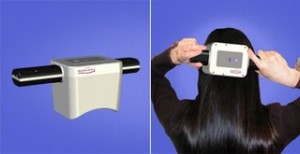 RSS FEED
RSS FEED
Archive for the ‘Advocacy’ Category
Handling Migraine Challenges: Helping Others Understand
July 19th, 2008

I’ve been asking e-course subscribers* what they find to be the biggest challenge in managing their Migraines. Many of you have responded. While I’ve written individually to everyone who responded, we all have so much in common that I wanted to share some of what I’ve gathered from your responses. This is kind of Megan’s Dear Abby for Migraineurs.
We all know that we are challenged in many ways by Migraine disease, but the majority of subscribers included something along the lines of “helping others understand.” How do we help others, the non-migraineurs who are important in our lives, to understand our disease, how it effects us, what we can and can’t do about it, and how it will effect them?
In reading all your responses, I see two issues in helping people understand.
The first is coping with those who judge us. “Oh it’s just a headache she’s being a baby.” “Oh so you have another of your little headaches?” “Why do you always have a Migraine when I need you to do something?”
People have all kinds of reasons for judging. Sometimes they want to feel superior. They may want to distance themselves from you, your problems, your pain. It’s almost a superstition at times; if they don’t sympathize, if they don’t believe in your pain, they can pretend it has nothing to do with them, that nothing like this can ever happen to them. Some disability advocates refer to the non-disabled as “TABs” – standing for Temporarily Able-Bodied. A potent reminder that disease and disability can happen to any one of us.
What can we do with those trying to feel superior? We can think of nasty responses to put them in their place, and that can be a fun exercise when we’re angry. The only thing I think is really effective is to speak our truth – tell the truth about what it’s like for us. Some of those people will hear. Some of it will sink in. This is more about Coming Out of the Migraine Closet. And if these people are not important to us, how much do we really need to do? We can choose how far, and when, we want to be advocates, and we can recognize that not everyone will understand us, not everyone will be our best friend. The job of advocacy takes a long time, and while I believe in educating people, it’s okay not to face down every single person every single time.
When important people judge us, the people that matter in our lives, I believe they do it out of pain. There is the pain of what they lose to Migraine disease. Our companionship, having fun with us, our help, our ideas, our input. Our work and productivity. There is the pain of seeing us in pain. Of wanting to help. Particularly in the case of parents and life partners, there is the pain of wanting to be able to fix it, make
it all better, make it go away. The pain of their powerlessness in the face of this disease. When we can’t face pain, or understand it. we look for someone or something to blame. “Why can’t you take better care of yourself?” “It’s all in your head.” “You have to learn not to stress out.”
The answer is in communication. If people care about us, it’s worth doing whatever it takes to help them understand. To sit down, at a time when no one is upset, and tell them what it’s like for us. Give them information they may not have about this disease. Teri Robert has a great resource, Understanding Migraine Disease and Migraineurs, which is a letter you can give to those who don’t understand.
But this brings us to the second issue, which I suspect is actually a bigger issue than what the others think. First, before we can ask them to understand, we have to understand ourselves. I think this may be the biggest ongoing challenge. We have to understand, and accept, that we have a disease. We didn’t choose it. We didn’t cause it. We may be scared, confused, upset, frustrated, worn down and in pain. But we are not lazy, we are not malingering and we are not making it up.
Even more of you wrote about your worries about effecting others than about actual judgment from others. “Feeling like I’m a burden on my family.” “This disease affects everybody around me and it’s not fair. Neither for me nor for the others.” “Having to stay in bed and my hubby having to take over.” “I want my clients to be able to depend on me but sometimes I cannot be there and that really bothers me.”
We want to be useful, to be helping and participating with those we care about. The first thing we have to do is to accept that we have a disease that will interrupt our lives, take us out of the action, make us rely on others. Inside of acceptance, we can begin to see how we can help, what we can do. Inside of understanding, we have options.
– Megan Oltman
*The Six Keys to Manage your Migraines and Take Back your Life – sign up for this free e-course in the upper right corner of this page.
Writing pen image courtesy of Toshiyuki IMAI; pointing finger image courtesy of Lisamarie Babik.
Tags: acceptance, disability, e-course, Migraine disease
Posted in Advocacy, Communicating, Managing | Comments (5)
Being Prepared to See the Doctor
July 8th, 2008
 I’m a proponent of doctor/patient partnership. When I see a new doctor, I am listening and looking to determine if this doctor is going to be a partner with me in my health care. I can’t thank Teri Robert enough for all the guidance in her excellent book Living Well with Migraine Disease and Headaches on how to be a partner with your doctor and get the health care you need and deserve. It’s easy to see when you are not getting it – a little example is the neurologist I saw in February, who:
I’m a proponent of doctor/patient partnership. When I see a new doctor, I am listening and looking to determine if this doctor is going to be a partner with me in my health care. I can’t thank Teri Robert enough for all the guidance in her excellent book Living Well with Migraine Disease and Headaches on how to be a partner with your doctor and get the health care you need and deserve. It’s easy to see when you are not getting it – a little example is the neurologist I saw in February, who:
- spent less than 10 minutes with me on a first appointment;
- glanced at my detailed migraine diary and health history for about 45 seconds and handed it back to me;
- was visibly impatient as I ran down my list of questions;
- told me I should contact him between appointments only “if there’s a problem,” not for questions; and
- clearly fixed on one point – that I have had allergic reactions to some medications – and would not even consider a trial of preventive medications.
With 20-20 hindsight and lots more preparation I am off to a new Migraine specialist today. I found out ahead of time that he spends a full hour with a new patient, and that his practice is restricted to treating migraines and headaches. Two big points in his favor. It’s easy, though, to fix on how we want the doctor to behave. I want to explore what it takes for the patient to be a partner, as well.
I spent most of yesterday morning preparing for this appointment. I have:
- a bulleted list of my current conditions;

- a description of my typical Migraine symptoms, severity, and frequency, before, during and after the headache phase;
- a list of all my current medications and supplements, with dosages;
- a detailed year-by-year health history, starting in childhood, and describing illnesses, injuries, when various chronic conditions began, etc;
- a list of my questions with space to write down answers; and
- a print-out of the past seven months of my Migraine and Wellness calendar (monthly) and daily diary.
Thanks again to Teri Robert for all the preparation advice on her site and on My Migraine Connection (Working with Doctors), and to MJ of Rhymes with Migraine for her excellent post “Communication” where she lists her preparation steps (mine are nearly identical with hers).
Beyond checklists, though, I think my biggest job is to be sure I have fully expressed all my concerns, to be sure I understand what the doctor tells me, and not to leave with any questions un-addressed. Cross your fingers for me; I’ll let you know how it goes!
– Megan
Here’s to great health care for all of us!
Handshake image courtesy of Aidan Jones; checklists image courtesy of Viv Evans
Tags: health care, migraine diary, migraine specialist
Posted in Advocacy, Medicine | Comments (3)
Highlights from the American Headache Society Annual Conference
July 1st, 2008
 Last week the American Headache Society held its 50th annual conference in Boston. You may have read other news of the proceedings and the many new discoveries, inventions, understandings, and treatment options that were presented at the conference. Lead expert Teri Robert of My Migraine Connection and Migraine blogger Eileen of My Life with Migraine attended the conference and will be posting a lot of information in the weeks to come. If I may relay some tidbits second-hand, I was inspired to hear of their experiences in a collegial atmosphere where a number of dedicated medical professionals and advocates are working and sharing ideas to help bring us relief from this life-stealing disease. I wish I could have gone along, but first things first. I need to get my own migraines under better control before attending conferences, which have always tended to trigger me. Though I suppose there might be no better place to be with a migraine!
Last week the American Headache Society held its 50th annual conference in Boston. You may have read other news of the proceedings and the many new discoveries, inventions, understandings, and treatment options that were presented at the conference. Lead expert Teri Robert of My Migraine Connection and Migraine blogger Eileen of My Life with Migraine attended the conference and will be posting a lot of information in the weeks to come. If I may relay some tidbits second-hand, I was inspired to hear of their experiences in a collegial atmosphere where a number of dedicated medical professionals and advocates are working and sharing ideas to help bring us relief from this life-stealing disease. I wish I could have gone along, but first things first. I need to get my own migraines under better control before attending conferences, which have always tended to trigger me. Though I suppose there might be no better place to be with a migraine!
The conference will provide material for many posts, both here and all around the Migraine blogosphere. I’m going to share a couple of highlights that I am particularly interested in, and we’ll touch on more of the new information as I have a chance to digest it.
One new device which looks promising is the transcranial magnetic stimulation, or TMS, device. Tested for use by those suffering from Migraine with Aura, the TMS device is held at the base of the skull at the first sign of aura (visual and sensory disturbances experienced by about 20% of migraineurs). You push a button to deliver two short magnetic field pulses to the brain. Apparently these pulses scramble and abort the abnormal electrical activity which takes place in the brain during a Migraine attack. The basic black and white model looks good for this raven-haired lady; maybe they’ll come out with some more colors soon! But seriously, this is a great alternative, since everyone can’t use triptans, and even if you can, triptans knock you out of action for a while.
 New research was presented about Why Pain Becomes Chronic. New understandings of how pain becomes chronic can help headache specialists develop new therapies which can help sufferers with Chronic Daily Headache. One of the new understandings involves the role of glial cells in the brain, which agitate neurons, increasing pain signals to the brain. Use of opiates appears to activate glial cells, so can contribute to the development of chronic pain. Research was also presented indicating that expectation of pain affects its severity, that in the case of chronic pain, the nervous system “over-reacts” but that this overreaction is physiological, not psychological. A very important distinction – biological changes have been observed in the nerves themselves. In other words, the pain is “all in our heads,” in physiologic structures in the brain, not “all in our heads” in any psychosomatic sense. I must say I feel vindicated – read my post It’s All in your Head on the difference between what’s in our heads physiologically and the old psychosomatic accusation we are so often subjected to.
New research was presented about Why Pain Becomes Chronic. New understandings of how pain becomes chronic can help headache specialists develop new therapies which can help sufferers with Chronic Daily Headache. One of the new understandings involves the role of glial cells in the brain, which agitate neurons, increasing pain signals to the brain. Use of opiates appears to activate glial cells, so can contribute to the development of chronic pain. Research was also presented indicating that expectation of pain affects its severity, that in the case of chronic pain, the nervous system “over-reacts” but that this overreaction is physiological, not psychological. A very important distinction – biological changes have been observed in the nerves themselves. In other words, the pain is “all in our heads,” in physiologic structures in the brain, not “all in our heads” in any psychosomatic sense. I must say I feel vindicated – read my post It’s All in your Head on the difference between what’s in our heads physiologically and the old psychosomatic accusation we are so often subjected to.
Yet another piece I am particularly interested in deals with Migraine in women and the role of hormones and the menstrual cycle. More on that when I know more!
Overall, the good news is, there are good people out there looking out for us, working hard to find ways to treat this disease.
– Megan Oltman
Neurons image courtesy of Rebecca Radcliff.
Tags: American Headache Society, Chronic Daily Headache, chronic pain, glial cells, Migraine treatment, Migraine wih Aura, transcranial magnetic stimulation
Posted in Advocacy, Medicine, Science | Comments (4)
Protect Migraineurs from Compact Fluorescents
May 14th, 2008
In December 2007, the U.S. Congress passed the Energy Independence & Security Act of 2007, which mandates the phasing out of incandescent lighting from stores by 2012, in order to conserve energy and help the environment. The act does not mandate the use of compact fluorescent bulbs (CFL’s), but given that they are the most widely available energy saving bulbs on the market at this time, the least expensive, and the only ones which can be used with existing lighting fixtures, the likelihood is that they will become the standard. There are other types of energy saving lighting available and under development; including LED lighting, halogens, and improvements in energy efficiency of incandescents. Let’s encourage the growth of those technologies!
mandates the phasing out of incandescent lighting from stores by 2012, in order to conserve energy and help the environment. The act does not mandate the use of compact fluorescent bulbs (CFL’s), but given that they are the most widely available energy saving bulbs on the market at this time, the least expensive, and the only ones which can be used with existing lighting fixtures, the likelihood is that they will become the standard. There are other types of energy saving lighting available and under development; including LED lighting, halogens, and improvements in energy efficiency of incandescents. Let’s encourage the growth of those technologies!
We migraineurs are just as supportive of energy conservation as anyone else. We also want to reverse
global warming and create a sustainable future. But we strongly support making that happen in a way that does not involve CFL’s! Although CFL’s do not visibly flicker as do old fashioned fluorescents, they still flicker, and that flicker is perceptible to the brain if not to the naked eye. Many migraineurs find that CFL’s are a trigger for them. They can also trigger epileptic seizures and lupus flare-ups.
A group of us who blog about and advocate for migraineurs and migraine research have put together a petition, asking Congress to amend the Energy Independence & Security Act to encourage development of other energy-saving technology. We too want a green future, we just don’t want one where we cannot take part in life outside our homes, for fear of encountering migraine triggers. Please join us in asking Congress to amend this law. You can sign the petition at ipetitions.com at this link: Protect Migraineurs from Compact Fluorescents.
– Megan Oltman
Please help us keep the world livable!
Compact fluorescent image courtesy of J. Nathan Matias.
Tags: Compact fluorescent lights, epilepsy, halogen lights, incandescent lights, LED lights, lupus, migraine, Migraine trigger
Posted in Advocacy | Comments (4)
Coming Out of the Migraine Closet
April 18th, 2008
When someone comes out of the closet, they take a stand, and they take a risk. For centuries, gay and lesbian people hid their identities in order to survive. Then a few people said “no more.” Decided to risk public censure, job loss, jail, so that things could change. And things have changed. Dramatically. There is still risk involved in coming out as a gay, lesbian, bisexual or transsexual  person, significant risk, but there has also been a significant change in our society around this issue.
person, significant risk, but there has also been a significant change in our society around this issue.
Are we willing to “come out” as migraineurs? Are we willing to tell people we have Migraine disease? To stop complaining about lack of understanding and take a stand, educate people? Are we willing to stand up and be counted – “I’m one too!” – and change the face and the perception of this disease? I thank the GLBT movement for an extremely useful analogy.
Sometimes we need to vent about how people see our condition as “Just a Headache” or “All in Your Head.” I have done my share of ranting on this point. We don’t want to have to educate people. It’s really not fair to have all this pain and have to explain it as well! (Do you hear your Mom’s/Dad’s voice in your head, like I do, saying “but life’s not fair!”) I also know it’s hard to show up as someone with a disease. A diseased person. A disabled person. A limited person. We don’t want the world perceiving us this way. Perhaps more significantly, we don’t want to think of ourselves this way.
Diseased, disabled, limited – these are common, automatic perceptions of those with visible illnesses. Being “in the closet” is not an option with a visible illness. Here again, the amazing and courageous movement for the rights of disabled people has changed public perception. The acceptance and  accommodation of those who are differently-abled has come a long way, though there is still much further to go.
accommodation of those who are differently-abled has come a long way, though there is still much further to go.
The blessing and curse of invisible illness is that it is invisible. No one can look at me and see that I have Migraine disease. If they are very perceptive, they might see that something is wrong if I’m in the midst of a migraine. No one can look at me and see that I have chronic fatigue. Sometimes they can see that I look very tired. No one can look at me and see that I have chronic sinus infections. Sometimes they can hear my hoarseness or congestion.
I think we all know what the curse of invisibility is. People do not understand our pain. They sometimes belittle it. Our employers may not accommodate us. Public events are not set up to make it easy for us to be there. Our dearly loved friends and family may think we are avoiding them, shirking responsibility, failing them. In a larger sense, invisibility means our diseases are under-funded, under-researched, medications are inadequate and specialists too few.
So what’s the blessing? When our disease is invisible, we can keep trying to show up as “normal.” We can avoid having potentially unpleasant conversations. We can avoid pity and put-downs. Of course, it’s a mixed blessing because people do see that something is wrong. I suspect some of the put-downs come from people seeing something is wrong but not knowing what it is. I think I’d rather be seen as someone with a chronic illness that interrupts my life, than as a messy flake who can’t be counted on to show up!
We need to remember that we migraineurs are 12% of the population. 12 out of every 100 people. 3 out of every 25! Whoever you are talking to, chances are they know many, many migraineurs besides you! Even more significantly, according to some estimates, 40% of Americans have some kind of chronic, invisible illness. Whoever you are talking to, they have people very close to them with invisible illness!
Lately I have been way out of the closet as a migraineur. I am in this public forum, all over the web with my real name, as a migraineur. I have gone to my business contacts and talked to them about the work I am doing as a Migraine management coach – and telling them that has involved sharing something of my personal story. I am someone with chronic illness who has built a business around my illness. I help others build workable lives around their illnesses. I can’t do that while hiding who I am.
These days when I show up at my business networking meetings, people ask me, with great concern, “how ARE you?” I told an associate recently, “feeling great today!” He breathed a little sigh of relief and asked “So your migraines are all gone?” (Hey, wouldn’t that be nice?) He wanted me to be better! It’s the kind of reaction I’ve been avoiding for years. “No,” I said, “it’s a chronic disease. It’s the way my nervous system is made. I wish they were all gone. But today I’m feeling great!” He nodded, I shrugged, and we went on to talk about something else.
A few months ago I couldn’t have had that conversation. For now, I keep showing up, assuming that people are not malicious, they are just uninformed. And I inform them. Gently, and as appropriate. They ask me what I’m doing these days and I tell them I’m focusing on helping people with  Migraine, people like me.
Migraine, people like me.
So hey, migraineurs, are you willing to come out and play, out here with me, out of the closet? I’d love to have your company. We can change public perception. We can create a world more responsive to our needs, more accepting of who we are.
– Megan Oltman
Don’t forget your sunglasses, it’s bright out here!
Closet image courtesy of Matthew Blank
ADA Road to Freedom image courtesy of Jay Wilson
Cave exit image courtesy of David Wilmot
Tags: Advocacy, Americans with Disabilities Act, Coming out, disability, invisible illness, Migraine disease, migraineurs
Posted in Advocacy, Communicating, Musings | Comments (7)
That disclaimer thing...
Remember: nothing we do here is medical advice or treatment or is a substitute for medical advice or treatment. Get competent medical advice to learn more about your migraines, possible treatments and risks.
What's New on Migraine Support Group Coaching |
Recent Comments
- on Calling all Redheaded Migraineurs
- on No, You’re not Crazy, You just Have Migraines
- on No, You’re not Crazy, You just Have Migraines